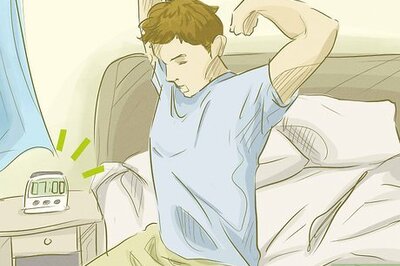
views
BERLIN: Booming car sales drove a stronger-than-expected jump in German industrial output in October, in a further sign that the export-oriented manufacturing sector helped Europe’s largest economy to get off to a solid start in the fourth quarter.
The German government has unleashed an unprecedented array of rescue and stimulus measures to help companies and consumers get through the COVID-19 pandemic as unscathed as possible, including incentives to buy electric and hybrid cars.
Industrial output was up by 3.2% on the month after an upwardly revised increase of 2.3% in the previous month, figures released by the Federal Statistics Office showed on Monday.
That was the biggest increase since June and easily beat a Reuters forecast for a rise of 1.6%.
Compared to February, the month before the COVID-19 pandemic reached Germany, industrial output was down by roughly 5%, the office said. In the car industry, Germany’s biggest industrial sector, production rose by nearly 10% on the month but was still roughly 6% below pre-pandemic levels.
“Industry had a very good start into the final quarter of 2020. It’s an extraordinarily strong increase,” VP Bank economist Thomas Gitzel said.
The surprisingly bullish output figures chimed with data released on Friday that showed industrial orders rose more than expected on the month.
Sentiment surveys and high-frequency data such as truck toll mileage have also pointed to relatively strong manufacturing activity in November despite a partial lockdown imposed to slow a second wave of coronavirus infections.
The lockdown measures, which forced large parts of the services sector to close from Nov. 2, are clouding the outlook for the economy which is expected to stagnate or even shrink in the final three months of the year.
But the decline in gross domestic product in the fourth quarter is likely to be less pronounced than in neighbouring European countries thanks to the strong performance of the manufacturing sector, Gitzel added.
Looking further ahead, production expectations in the industrial sector have deteriorated for the coming months, with consumer-orientated industries in particular feeling gloomier about their prospects, the Ifo institute said on Monday.
“Even as industrial orders are pointing to a continuation of the recovery, the further development in manufacturing remains uncertain in light of the pandemic and the partial lockdown,” the economy ministry said.
Germany’s gross domestic product grew by a stronger-than-expected 8.5% quarter-on-quarter from July through September following an unprecedented 9.8% plunge in the second quarter due to the first wave of the COVID-19 pandemic.
Disclaimer: This post has been auto-published from an agency feed without any modifications to the text and has not been reviewed by an editor
Read all the Latest News, Breaking News and Coronavirus News here




















Comments
0 comment